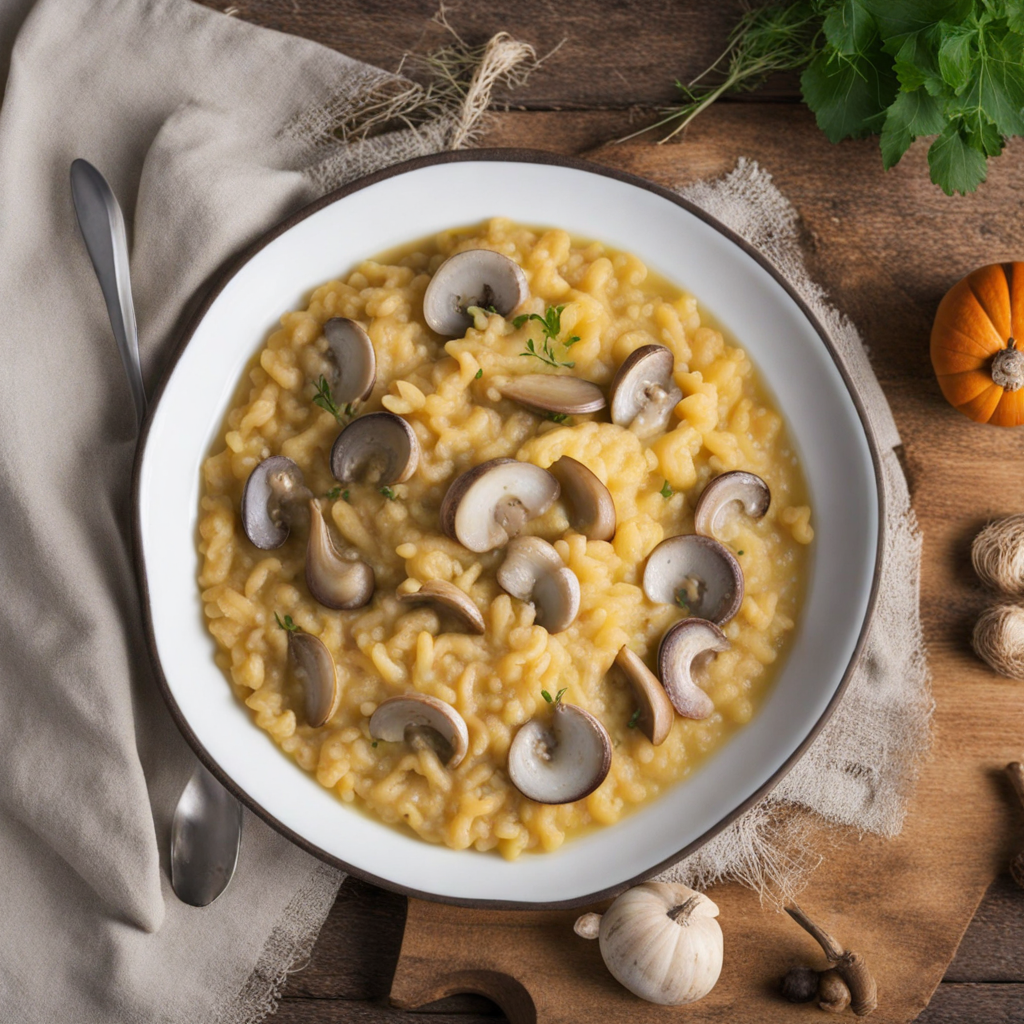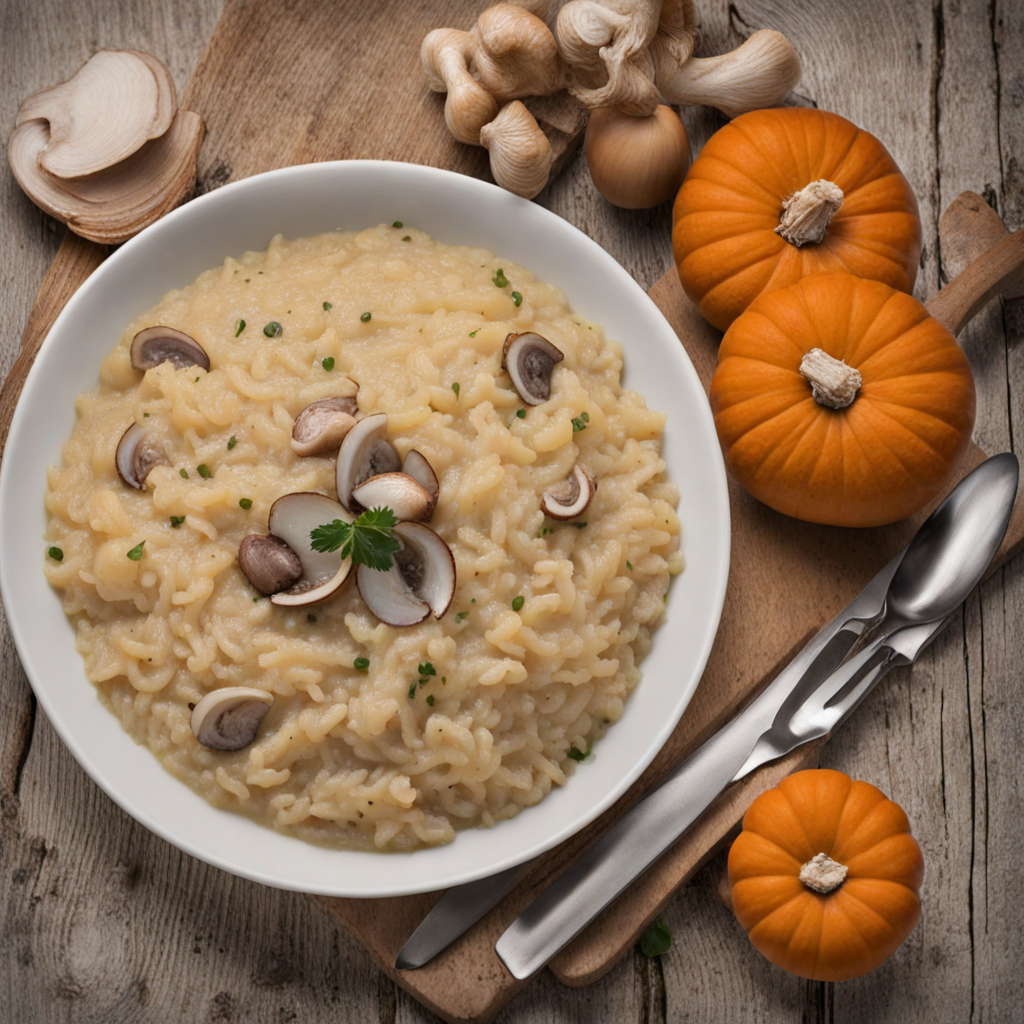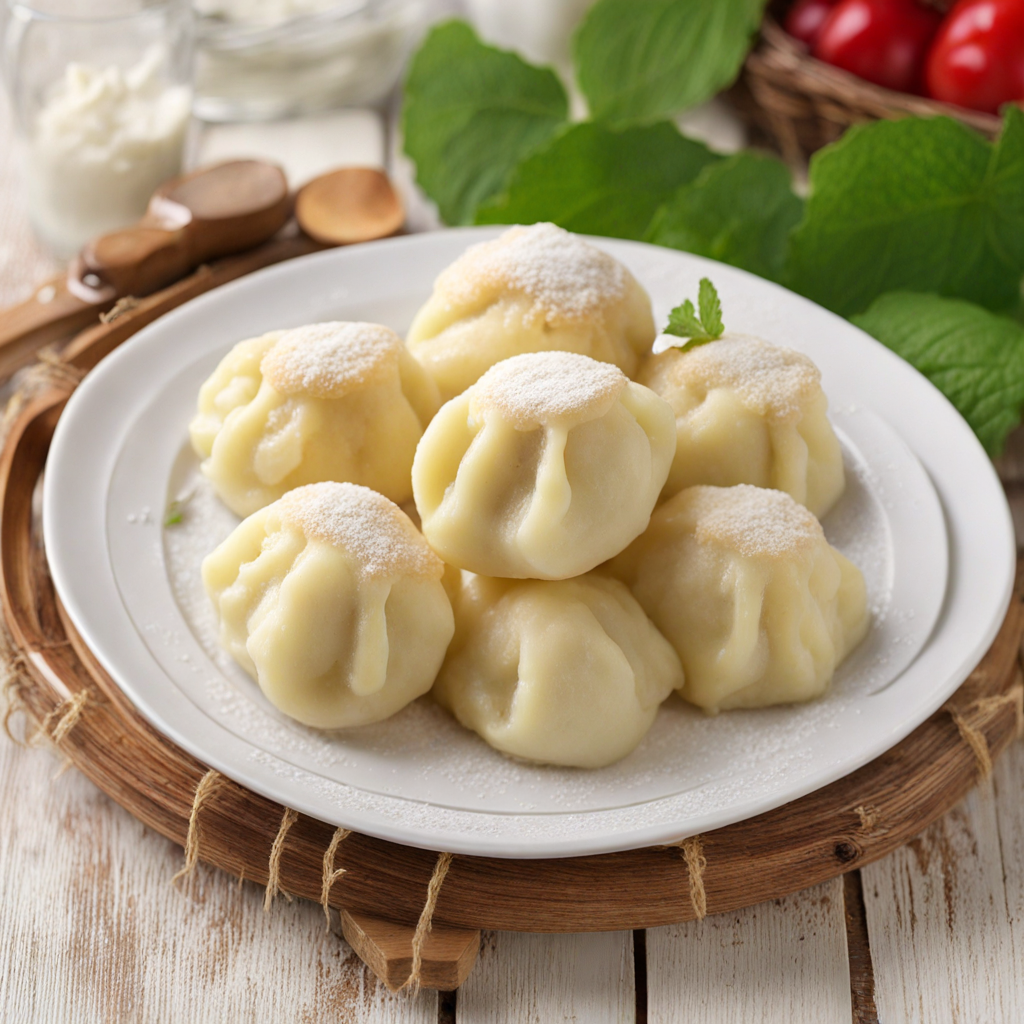Slovenian Risotto
Slovenian Risotto is a delightful twist on the traditional Italian dish, reflecting the unique flavors and ingredients of Slovenia's rich culinary heritage. This dish often features locally sourced ingredients such as creamy Arborio rice, which is slowly simmered in a flavorful broth made from fresh herbs, seasonal vegetables, and sometimes even wild mushrooms. The use of local cheeses, like the famous Tolminc, adds a creamy texture and a distinctive flavor that enhances the overall experience. Each bite of Slovenian Risotto offers a harmonious blend of earthiness and creaminess, making it a comforting yet sophisticated meal. What sets Slovenian Risotto apart from its Italian counterpart is the addition of regional specialties such as pumpkin, asparagus, or even game meats, which are often incorporated to showcase the local produce and culinary traditions. The dish is frequently finished with a drizzle of high-quality pumpkin seed oil, adding a nutty aroma that elevates the risotto to new heights. The vibrant colors and textures of the ingredients not only make it visually appealing but also create a symphony of flavors that dance on the palate, inviting diners to savor every morsel. Pairing Slovenian Risotto with a glass of local wine, such as a crisp Sauvignon Blanc or a robust Teran, enhances the dining experience and highlights the region's dedication to quality food and drink. Whether enjoyed as a hearty main course or a luxurious side dish, Slovenian Risotto embodies the essence of Slovenia's culinary identity, making it an enticing choice for anyone looking to explore new tastes and indulge in the country's gastronomic delights.
How It Became This Dish
Slovenski Rižot: A Culinary Journey Through Slovenia's History Slovenia, a small but vibrant country nestled in the heart of Europe, boasts a rich culinary heritage that reflects its diverse geography and cultural influences. Among the myriad of traditional dishes that symbolize Slovenian gastronomy, Slovenski rižot, or Slovenian risotto, stands out as a testament to the country's agricultural bounty and culinary ingenuity. This dish, while sharing similarities with its Italian cousin, has developed a unique identity that speaks to Slovenia's historical narrative, social customs, and regional flavors. Origins of Slovenski Rižot The roots of Slovenski rižot can be traced back to the introduction of rice cultivation in the region. Although rice is not a native crop to Slovenia, it was introduced in the 19th century, particularly in the marshy areas of the Prekmurje region, where conditions were favorable for its growth. This introduction coincided with the broader Austro-Hungarian influence on Slovenian cuisine, which brought various culinary techniques and ingredients from across Central Europe and the Mediterranean. The dish itself is believed to have evolved from the traditional risotto of Northern Italy, specifically from the regions of Friuli-Venezia Giulia and Veneto, which share historical ties with Slovenia. As Slovenes began to adopt rice into their culinary repertoire, they adapted the dish to suit local tastes, incorporating ingredients that reflected the agricultural products of the region. The use of seasonal vegetables, meats, and local herbs became the hallmark of Slovenski rižot, transforming it into a dish that not only nourished but also connected families and communities. Cultural Significance Slovenski rižot is more than just a meal; it is a cultural symbol that embodies the spirit of Slovenian hospitality and communal dining. Traditionally, this dish is prepared for gatherings, celebrations, and family events, serving as a bridge between generations. The act of cooking rižot together often brings families closer, fostering an environment where stories are shared, traditions are passed down, and memories are created. In Slovenia, food is deeply intertwined with social customs and celebrations. Slovenski rižot often graces the table during festive occasions such as weddings, birthdays, and holidays. Its comforting and hearty nature makes it a favorite during winter months, often enjoyed with a glass of local wine or a strong, aromatic herbal tea. The communal aspect of sharing a meal is particularly important in Slovenian culture, where food serves as a medium for connection and celebration. Development Over Time As Slovenia transitioned through various political and social changes in the 20th century, so too did its culinary landscape. The advent of Yugoslavia and later independence in the 1990s brought about a renewed interest in national identity, which extended to food culture. Slovenski rižot, previously viewed as a simple home-cooked meal, gained recognition as a symbol of Slovenian cuisine on the international stage. Throughout the years, Slovenski rižot has continued to evolve, with chefs experimenting with different ingredients and techniques. While traditional recipes remain cherished, modern variations have emerged, influenced by global culinary trends and the farm-to-table movement. Contemporary Slovenian chefs are increasingly sourcing local, organic ingredients, reflecting a commitment to sustainability and environmental consciousness. This emphasis on local produce not only enhances the flavor of the dish but also supports local farmers and preserves traditional agricultural practices. While the classic Slovenski rižot is typically made with a base of onions, garlic, broth, and rice, modern interpretations often incorporate an array of ingredients. Seasonal vegetables such as asparagus, mushrooms, or zucchini may be added, while proteins can range from chicken to seafood. A notable trend has been the use of wild herbs and foraged ingredients, emphasizing Slovenia's rich natural landscape and culinary biodiversity. Regional Variations Slovenski rižot is not a monolithic dish; it varies significantly across regions, reflecting local agricultural practices and culinary traditions. In the coastal regions of Slovenia, for example, seafood is more prevalent, leading to variations that incorporate fresh fish and shellfish, often infused with flavors from Mediterranean herbs. In contrast, the inland areas may favor heartier ingredients such as smoked meats or game, lending a rustic quality to the dish. The influence of neighboring countries is also evident in regional adaptations. In areas close to Italy, one might find risotto prepared with a more Italian flair, incorporating wine and rich cheeses, while in the northern regions bordering Austria, the dish may take on a creamier consistency, reflecting Austrian culinary techniques. Contemporary Relevance In recent years, there has been a resurgence of interest in traditional Slovenian cuisine, buoyed by the global movement towards authentic, local, and sustainable food practices. Slovenski rižot has emerged as a favorite among both locals and tourists, often featured in culinary festivals and food tours promoting Slovenian gastronomy. This renewed appreciation for traditional dishes has led to a flourishing of culinary schools and workshops dedicated to preserving and teaching these age-old recipes. Culinary tourism has also played a pivotal role in popularizing Slovenski rižot. Visitors to Slovenia often seek out authentic dining experiences, eager to taste the flavors of the region. Restaurants and guesthouses showcasing traditional Slovenian cuisine have embraced this trend, often highlighting Slovenski rižot as a signature dish that offers a taste of the country's rich culinary history. Conclusion Slovenski rižot is a dish that not only nourishes the body but also feeds the soul, connecting people to their heritage and to one another. Its evolution from a simple, rustic meal to a celebrated symbol of Slovenian culture encapsulates the resilience and creativity of the Slovenian people. As Slovenia continues to carve out its culinary identity on the global stage, Slovenski rižot remains a poignant reminder of the importance of tradition, community, and the enduring power of food to bring people together. Through each spoonful of this savory dish, one can taste the history, culture, and spirit of Slovenia—a country rich in stories and flavors, waiting to be shared.
You may like
Discover local flavors from Slovenia







